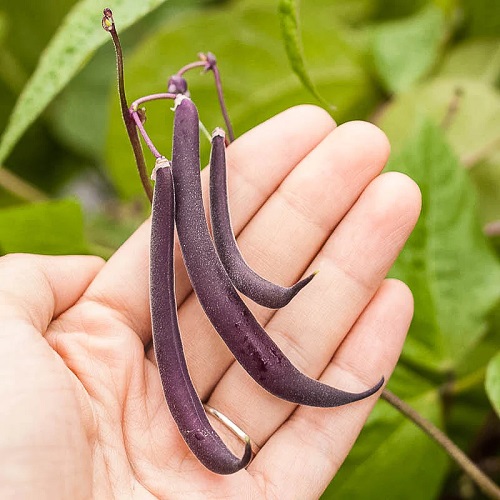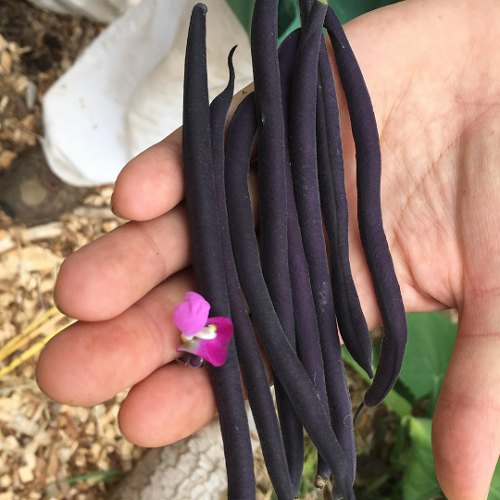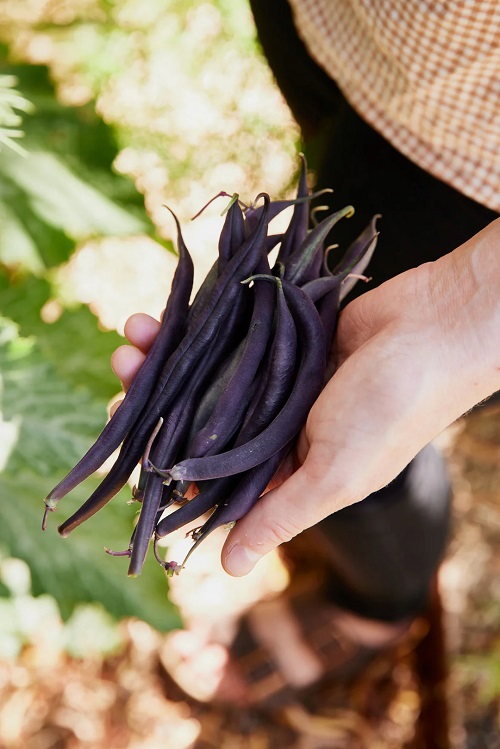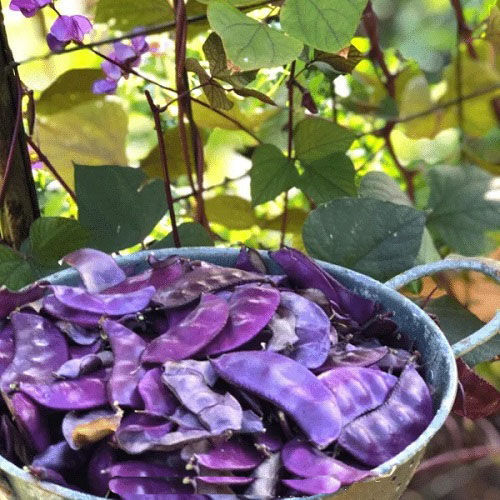Purple Beans are not only just delicious but they also add a visual interest in the garden! Here are the best varieties you can grow!
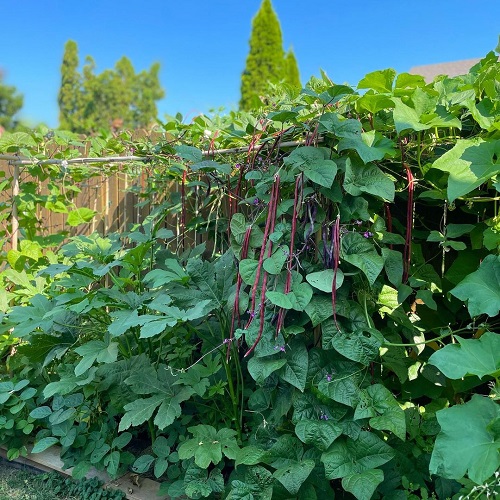
Imagine harvesting vibrant, violet-hued pods that are not only a visual feast but also packed with nutrients and flavor. Whether you’re spicing up a stir-fry or looking to add a splash of color to your garden, Purple Beans are your ticket to an extraordinary experience.
Here are the best beans to grow vertically
What Are Purple Beans
Purple Beans, closely related to common green beans (Phaseolus vulgaris), are a captivating variation known for their striking deep purple pods. These beans typically grow to about 4 to 6 inches in length. Beyond their vibrant appearance, they offer unique characteristics.
- Appearance: They are instantly recognizable due to their vivid, deep purple pods. These pods retain their striking color even after cooking, making them a visually appealing addition to dishes.
- Texture: The beans are notable for their crispness and tenderness. When prepared, they maintain a delightful snap, contributing to their overall appeal in culinary creations.
- Flavor: They boast a mild, slightly sweet, and nutty flavor. They are often described as having a gentler taste compared to green beans, making them a versatile ingredient in various recipes.
Vegetables that Look Like Carrots
Best Purple Bean Varieties
1. Purple Queen
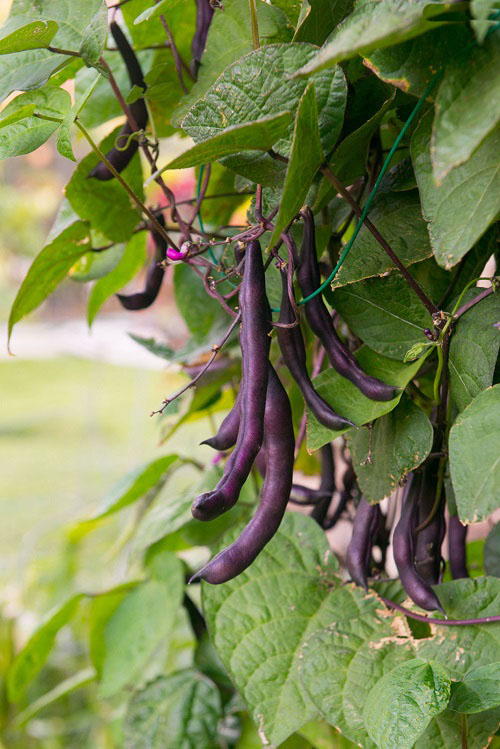
Botanical Name: Phaseolus Vulgaris ‘Purple Queen’
Purple Queen is known for its vibrant, deep purple pods. These tender, stringless beans are rich in fiber and antioxidants, contributing to digestive health.
2. Royalty Purple
Botanical Name: Phaseolus Vulgaris ‘Royalty Purple’
Royalty Purple has striking dark purple pods and originates from Europe. They are high in vitamins A and C, which promote healthy skin, vision, and immune function.
Man Made Vegetables You Never Knew About!
3. Velour
Botanical Name: Phaseolus Vulgaris ‘Velour’
Velour purple, a French variety, features velvety, deep purple pods. They are rich in minerals like potassium and iron, supporting heart health and red blood cell production.
4. Amethyst
Botanical Name: Phaseolus Vulgaris ‘Amethyst’
Amethyst beans are native to Asia and known for their slim, royal purple pods. They are packed with folate and vitamin K, essential for cell division and bone health.
5. Purple Dove
Botanical Name: Phaseolus Vulgaris ‘Purple Dove’
Purple Dove beans are native to the Americas and produce vibrant, medium-purple pods. These beans are a good source of plant-based protein and dietary fiber.
6. Trionfo Violetto
Botanical Name: Phaseolus Vulgaris ‘Trionfo Violetto’
Trionfo Violetto beans, hailing from Italy, have variegated purple and green pods. They contain flavonoids and phytonutrients that may help reduce inflammation.
Check out Our Article on Ornamental Vegetables here
7. Blauhilde
Botanical Name: Phaseolus Vulgaris ‘Blauhilde’
Blauhilde beans, native to Europe, are slender and dark purple. They are rich in antioxidants, including anthocyanins, and aid in improved cognitive function.
8. Purple Teepee
Botanical Name: Phaseolus Vulgaris ‘Purple Teepee’
Purple Teepee beans are a compact, bush variety with bright purple pods. They originate from North America and provide an excellent source of vitamin B6.
9. Dragon Tongue
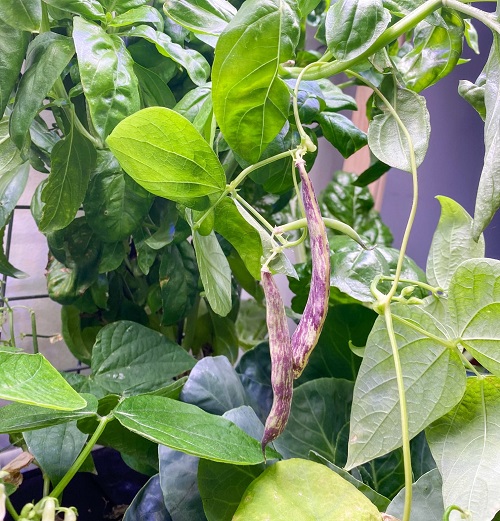
Botanical Name: Phaseolus Vulgaris ‘Dragon Tongue’
Dragon Tongue beans, though not entirely purple, have variegated pods with purple streaks. They offer a unique blend of vitamins and minerals, supporting overall health.
10. Purple King
Botanical Name: Phaseolus Vulgaris ‘Purple King’
Purple King beans are native to North America and known for their royal purple pods. They are an excellent source of manganese, a mineral essential for bone health and metabolism.
Broccoli Plant Growing Stages with Pictures
11. Purple Peacock
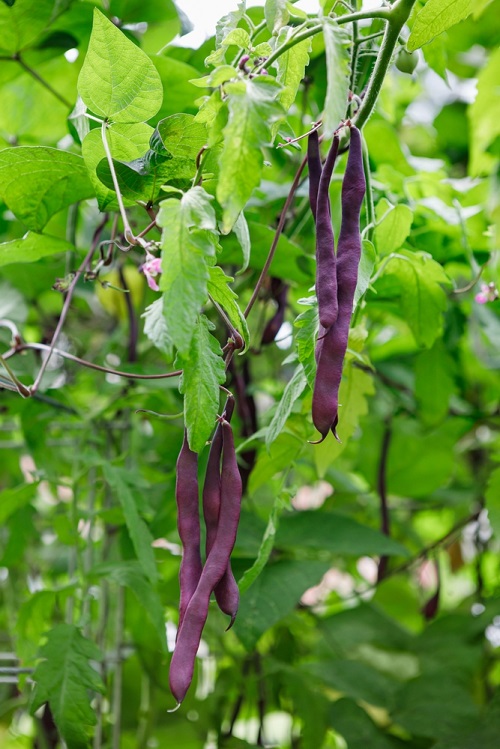
Botanical Name: Phaseolus Vulgaris ‘Purple Peacock’
Purple Peacock beans are prized for their mottled purple and green pods. They are rich in vitamin E, an antioxidant that helps protect cells from damage.
12. Purple Fillet
Botanical Name: Phaseolus Vulgaris ‘Purple Fillet’
Purple Fillet beans, native to Asia, are slender and stringless with bright purple pods. They are a good source of vitamin A, promoting healthy vision and skin.
13. Purple Hyacinth Bean
Botanical Name: Phaseolus Vulgaris ‘Purple Hyacinth’
It is not just a visual delight, but also has a unique flavor. The taste is often described as similar to that of a green bean, but with a slightly nuttier and earthier undertone.
14. Purple Runner

Botanical Name: Phaseolus Vulgaris ‘Purple Runner’
Purple Runner beans produce long, vibrant purple pods and are native to Central and South America. They are low in calories and provide fiber for weight management.
Giant Cabbage Growing Tips here
Frequently Asked Questions (FAQs)
Q1. What are purple beans, and why are they purple?
Answer: They are a type of stringless bean with vibrant purple pods. Their color is due to the presence of anthocyanins, natural pigments that also offer antioxidant benefits.
Q2. Do they taste different from green beans?
Answer: They have a similar taste and texture to green beans. They are crisp, and tender, and have a slightly sweet, earthy flavor. Some people claim that they have a nuttier taste.
Q3. Can I grow purple beans in my garden?
Answer: Yes, you can grow them in your garden if you have a suitable climate and well-drained soil. They are relatively easy to cultivate and make a colorful addition to any garden.
Best Pink Carrot Varieties You Can Grow
Q4. What are the nutritional benefits of purple beans?
Answer: They are rich in vitamins, minerals, and antioxidants, including vitamin C, vitamin A, and dietary fiber. They offer health benefits such as supporting immune function and promoting digestive health.
Q5. Are there any specific pests or diseases that affect purple bean plants?
Answer: These plants can be susceptible to common pests and diseases, such as aphids, bean weevils, and fungal infections. Regular inspection and proper care can help prevent these issues.
Q6. How should I store fresh purple beans to keep them fresh longer?
Answer: To extend the shelf life, store them in a plastic bag or airtight container in the refrigerator. They can stay fresh for up to a week.


